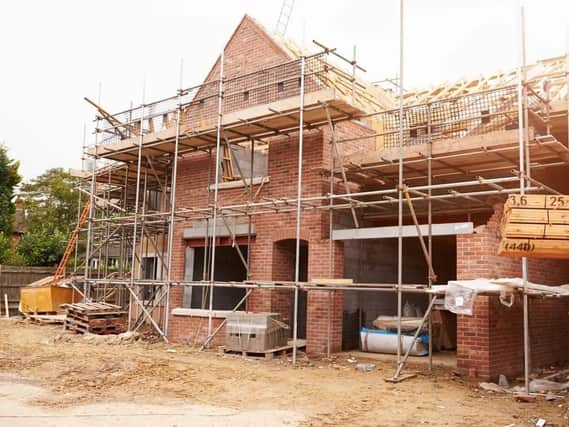Preston pulls out of deal with Chorley and South Ribble on new housing numbers


The three councils have had a so-called “memorandum of understanding” (MOU) since 2012, allowing them to pool their individual minimum housebuilding numbers and redistribute the total as they see fit.
Under the latest incarnation of that agreement – reached in back in April – Preston is obliged to build 410 properties per year, South Ribble 334 and Chorley 282.
Advertisement
Hide AdAdvertisement
Hide AdHowever, in August, a planning inspector in an appeal case involving a proposed development in Chorley concluded that the MOU should be given only “limited weight” when making crucial judgements about whether an area has five years’ worth of land set aside to meet its housing target – as required by the government.
Mike Hayden said that there were “significant unresolved objections” to the MOU figures, which are yet to be tested in the forthcoming public examination process ahead of the adoption of a joint local plan between the districts.
The authorities would have a stronger basis for defending their redistributed totals once they are formalised within that plan – but it is not due to be completed until late 2023.
At the start of the latest Preston City Council planning committee meeting, head of development Natalie Beardsworth told members that – in light of the inspector’s conclusions – they should “disregard” the agreement, as it would no longer “serve the purpose for which it was intended”.
Advertisement
Hide AdAdvertisement
Hide AdInstead, the authority will now rely on the “standard method” to calculate its minimum annual housebuilding need. That formula – on which the non-redistributed Central Lancashire-wide total is based – reduces Preston’s individual count to 250 homes per year.
Papers presented to the committee emphasise that the authority is not declaring that the figure arrived at under the calculation is the city’s actual housing requirement – though it does continue to enable it to demonstrate a five-year housing land supply.
The council argues that the situation means it will not be pitched back into the position of having to approve applications for housing on land not earmarked for the purpose.
However, members were told that legal representatives instructed by developers had warned that was exactly where the authority would end up, because its most important planning policies would be rendered “out of date” by the shift to the new figure.
Advertisement
Hide AdAdvertisement
Hide AdOne of the reasons for redistributing the housing numbers across Central Lancashire is that Preston and South Ribble have higher construction targets because of commitments made under the City Deal, while Chorley has the most greenbelt and so less space to accommodate development.
Yet outside the MOU, Chorley would be obliged to take more than half of all new housing in Central Lancashire – doubling its annual requirement to 569 properties per year compared to under the current agreement.
Preston City Council cabinet member for planning Peter Moss said in a statement after the meeting that the MOU had been entered into “to achieve a clear and consistent approach to monitoring housing land supply and to ensure a sustainable pattern of development across the region in advance of a new local plan”.
“Unfortunately, the results of recent planning appeals have rendered the current MOU unsustainable in achieving this aim so we have taken the decision to withdraw.
Advertisement
Hide AdAdvertisement
Hide Ad“We remain committed to working with our partners in Central Lancashire and continuing our strong relationship to promote sustainable development across the region with the best interests of our residents at heart, recognising in future planning policies that Central Lancashire is a single housing market area,” Cllr Moss added.
It is thanks to our loyal readers that we can continue to provide the trusted news, analysis and insight that matters to you. For unlimited access to our unrivalled local reporting, you can take out a subscription here and help support the work of our dedicated team of reporters.
Comment Guidelines
National World encourages reader discussion on our stories. User feedback, insights and back-and-forth exchanges add a rich layer of context to reporting. Please review our Community Guidelines before commenting.